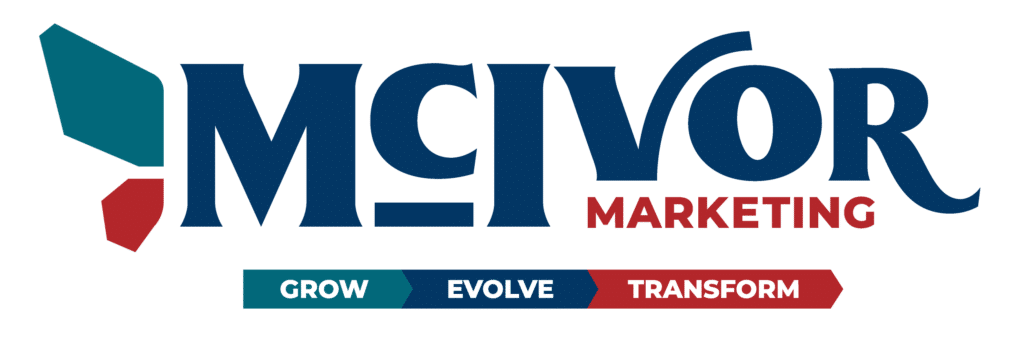SOCIAL MEDIA SUCCESS FOR NONPROFITS: STRATEGIES AND DESIGN TIPS
No matter your industry, social media plays a critical role in building awareness for your business. For nonprofits, it’s especially essential for connecting with the community and driving engagement in your cause. Below, we share six key social media tips to help your nonprofit strengthen its online presence this year.
According to the Global Web Index 2018 report, the average person spent over two hours per day on social media in 2017. This means your nonprofit needs to be active and thriving in this space to make a lasting impact.
While social media is a competitive arena, it also offers a unique platform for nonprofits to tell their story, engage supporters, and encourage donations.
In this post, we’ll walk nonprofits through building a powerful digital marketing strategy, whether or not they have access to professional design resources. Plus, don’t forget to explore Canva’s nonprofit resource page for helpful testimonials from top NGOs.
Let’s dive into creating your winning social media strategy!
1. IDENTIFY YOUR PRIMARY PERFORMANCE OBJECTIVES
Before launching a successful social media strategy, it’s crucial to clearly define your objectives. Hubspot identifies the top seven reasons nonprofits use social media:
- Sharing updates and news
- Building brand recognition
- Educating about the cause and mission
- Fundraising efforts
- Recruiting volunteers
- Recognizing donors
- Attracting new employees
Once you’ve determined your goals, set measurable benchmarks for success.
Your social media KPIs should reflect how well your nonprofit fosters long-term, meaningful interactions with its audience.
Use metrics that track conversions and engagement retention. For example, the number of views on a Facebook post might indicate growing awareness, while clicks could show interest in your cause, and donation dollars reflect successful conversions.
Having a well-thought-out plan in place will streamline your social media efforts. Consolidate your research into a project proposal. Consider using templates like the Dark Circle Photo Modern Marketing Proposal for easy reference.
2. SELECT THE BEST SOCIAL MEDIA PLATFORM FOR YOUR NONPROFIT
Once you’ve defined your audience, it’s crucial to identify where they spend their time online before you start engaging with them. It’s not just about knowing where they gather, but also where they are most active and engaged.
While it may be tempting to be on every platform, it’s better to focus on two or three where your audience is highly engaged. Many nonprofits make the mistake of creating accounts on multiple platforms, only to let them go inactive, which can harm your brand more than not having a presence at all.
Leverage tools like BuzzSumo to find out where your audience is most active and which content resonates with them.
Instagram, for example, is a popular platform for promoting brands and causes today.
3. DEVELOP YOUR CONTENT STRATEGY
You’re almost there: You’ve researched your audience and identified the best platforms to reach them.
Now, it’s time to focus on your content.
Without a clear plan for what to say and when to say it, you risk confusing your audience at best or being ignored at worst—neither of which you want.
Here are five quick tips to help you create an effective content strategy for your nonprofit:
1. Know Your Voice
You’re passionate about your nonprofit’s mission—that’s why you’re there, right? Let that passion shine through in your content. Every post should reflect your brand’s voice and the image you want to convey.
2. Create a Pattern of Frequency
Creating a content calendar helps you plan what to say and when to say it, ensuring you reach your audience when they’re most receptive.
Make sure your content aligns with the season and resonates with where your audience is in their lives. Scheduling posts in advance also helps maintain your nonprofit’s presence without consuming too many resources.
Tools like Hootsuite and Buffer can assist in managing your social media schedule and tracking audience feedback. If you’re looking for a free option, organizing your schedule in daily, weekly, or monthly folders on your computer or Dropbox can be just as effective.
3. Understand Your Audience Behavior
Why would someone choose to follow or like your page? What motivates a person to click ‘donate,’ leave a comment, or share your content? It’s crucial to engage with your audience, not just talk at them. Ask questions, invite feedback, and share stories—make it a two-way conversation.
Visual content often evokes emotions more effectively than words alone. Incorporate high-quality photos, graphics, videos, and relevant hashtags. Worried about cost? It doesn’t have to be expensive—there are plenty of free stock image websites available to help you enhance your posts.
4. Solve Your Audience’s Problems
Nonprofits often ask their audience to take action—whether it’s promoting a cause, signing a petition, volunteering, or donating.
Social media can not only address people’s needs, but also empower them to support your mission. By sharing valuable, easily accessible information, you create a reciprocal relationship that fosters trust, ultimately leading to stronger audience retention.
5. Be Honest
This is arguably the most important tip: The best way to connect with your audience is to be authentic, just as you would in real-life interactions. People who are overly loud and boastful about their achievements rarely earn respect.
Quality content isn’t superficial, and viewers can detect insincerity instantly. If you remain honest, relevant, and true to your cause, your audience is much more likely to engage with your content and recommend it to others.
4. ENGAGEMENT
If there’s one key to social media success, it’s this: engagement drives results. Without it, there’s no return on investment.
Imagine you’re at a dinner party. On your right, a woman introduces herself, asks about where you’re from, your hobbies, and mutual friends. She’s attentive, engaging, and finds common ground.
On your left, a man introduces himself, but immediately starts talking about his week, why he’s there, and how funny his friends think he is. He doesn’t ask you a single question or find any common interests.
Who would you rather continue talking with? And who would you avoid at the first chance?
The same applies to social media. Posting just to post won’t get you results. The goal is to capture your audience’s attention, build a connection, and motivate them to engage, relate, and share.
Here are some engagement tips that will help you succeed:
1. Identify The Trigger Points
The first step to engaging your audience is understanding what types of content resonate with them. This requires some research and experimentation. Look at how similar organizations are successfully engaging their audiences.
Use keyword searches and hashtags to discover popular topics and content that capture your audience’s interest.
Once you’ve identified their preferences, experiment with different content formats, topics, and headlines to find what sparks interest and encourages conversation and clicks.
2. Invite Conversation
Just like in real life, people are more likely to engage when you ask questions or invite their input. Whether it’s through surveys, seeking advice, starting a conversation, or running a contest, encourage your audience to participate.
The core of social media is about being social. While other channels may call for a more formal tone, social media is ideal for developing a personable brand voice that helps supporters feel connected. Don’t shy away from using humor either.
Sharing expands your reach into new areas. Make your posts easy to share by incorporating visuals, infographics, and short links. And always take the time to respond when people engage with your content—many miss out on this valuable opportunity.
3. Measure Your Results and Repeat
There’s little value in trying different strategies without tracking your results. It’s essential to analyze what effectively engages your audience and what doesn’t. While engagement often aligns with conversions, focus on understanding what truly resonates.
For example, Greenpeace posted a simple tweet asking a question to encourage followers to think about the importance of solar power. Although the question could be seen as rhetorical, its strength lies in inviting others to share their opinions and perspectives.
More important than the 136 likes was the level of engagement—135 retweets and several comments. Greenpeace could have further boosted engagement by responding to some of those comments.
5. TRACK AND MEASURE YOUR RESULTS
We’ve highlighted that social media can be an incredibly powerful marketing tool, but it can also become a time drain for nonprofits that don’t track the effectiveness of their campaigns.
While metrics like followers, shares, and likes provide some insight, there are other, often overlooked metrics that are far more critical. If you miss these, your ability to achieve meaningful results from your social media efforts will suffer.
So, what should you be measuring?
Since the primary goals of your social media campaigns should be boosting engagement and brand awareness, focus on metrics that offer valuable insights into these areas.
Additionally, with each campaign, ask yourself what you’re aiming to accomplish—is it to drive donations, newsletter signups, or event attendance?
Tracking these metrics and showing tangible results will help demonstrate to leadership the value of investing in social media efforts.
Here are the metrics:
1. Brand Sentiment
In social media, not all publicity is good publicity. Negative feedback can quickly damage your brand. It’s crucial to monitor comments, replies, and how people share your posts. For a broader view, consider using tools like web scraping to analyze sentiment by gathering brand mentions across your social platforms.
Equally important is having a plan for responding to negative feedback, not just avoiding it.
Google Alerts is a free tool that can help you stay on top of brand mentions and sentiment.
2. Lead or Conversion Growth
In social psychology, attribution refers to the process of explaining the causes of behaviors and events. The same concept applies to social media—it’s vital to understand how your content influences audience reactions.
While followers and mentions can indicate brand awareness, they don’t tell you much about how specific conversations lead to concrete actions.
Tools like Marketo and Convertro excel at tracking how many social interactions it takes to turn a prospect into a customer (however you define “customer”).
This data helps you identify what resonates with your audience and allows you to allocate your marketing resources more effectively toward successful social strategies.
3. Klout Score
Klout has gained popularity as a tool for measuring social engagement. It helps assess whether your marketing efforts are enhancing brand recognition and perceived authority.
Additionally, monitoring other organizations’ Klout scores can offer insight into how effectively they are engaging their social media followers.
4. Inbound Links & Tracking Codes
When using links as calls to action in your social media campaigns, it’s crucial to track their performance all the way to your website, donation page, or blog post.
After a successful campaign, you might notice a spike in website traffic. By identifying these surges and linking them to specific social activities, you can determine which campaigns have had the greatest impact.
While most analytics tools show where your clicks originate, you can also use tools like Google UTM Tracker or Bitly’s URL shortener to monitor unique campaigns across multiple channels and assess their success.
6. BOOST YOUR NONPROFITS SOCIAL MEDIA SUCCESS
No matter the size of your nonprofit, incorporating these social media tips into your strategy will help increase brand awareness, engagement, and retention.
Social media is both an art and a science. No matter where you are in your social media marketing journey, applying the tips, tricks, and tools from this article will bring value.
With time, you’ll discover which content sparks conversations within your community and how to fine-tune your nonprofit’s strategy for the best results.
Above all, enjoy the process. Set realistic goals, and remember that building a sustainable social media presence is a long-term commitment. Like any strong relationship, it’s all about consistent communication—so start today!
MCIVOR MARKETING WANTS TO HELP YOUR NONPROFIT THRIVE
At McIvor Marketing, we are committed to helping your nonprofit thrive. With experience working alongside organizations like The Midland Area Wellbeing Coalition, we understand the unique challenges nonprofits face in engaging their community and driving meaningful impact. Our tailored strategies are designed to amplify your mission, boost brand visibility, and foster lasting relationships with your supporters. Whether it’s crafting compelling social media campaigns or enhancing digital outreach, we’re here to help you succeed every step of the way. Together, we can ensure your nonprofit reaches its full potential.
Want to Read 5 Marketing Tips for Small Businesses?
Check out this blog post and see if your business is currently tackling these Top 5 Marketing Tips. If you have questions or find you need help in an area, reach out!
Like What You Read? Share It!




